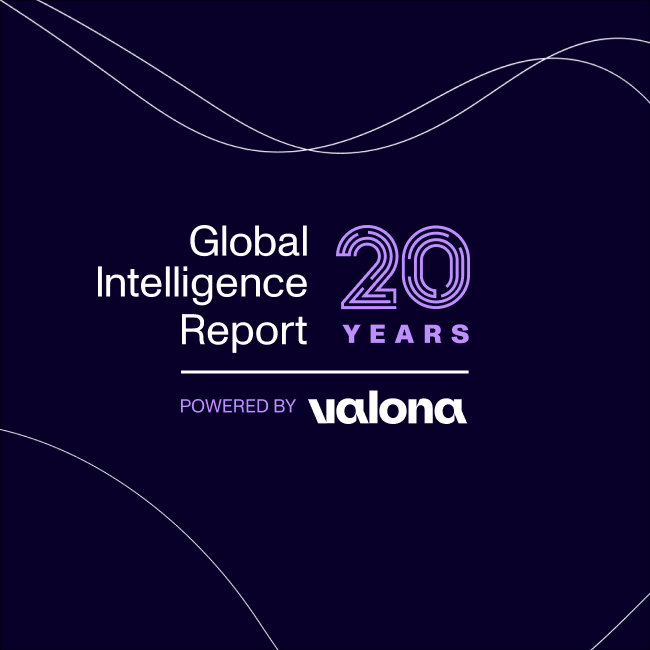
How smart retail Competitive Intelligence tools drive market leadership
Discover how smart retail competitive intelligence tools with data collection, real-time monitoring, and advanced analysis can drive market leadership and success.
Outsmarting the competition starts with sharper insights. To make smarter decisions, retailers need a constant stream of real-time data about competitors—but turning that flood of information into actionable strategies can feel like navigating a labyrinth. Enter smart Competitive Intelligence (CI) tools: the ultimate sidekick for tracking price shifts, promotions, product stock, and even the ever-elusive customer sentiment.
In this article, we’ll dive into the must-have capabilities of CI tools, showing how retailers can wield them to gather and analyze competitive intelligence with precision and ease.
The role of Competitive Intelligence in retail success
Competitive Intelligence (CI) is the systematic process of gathering, analyzing, and utilizing information about competitors, market trends, and consumer behaviors. Through this process, businesses get a clearer view of the competitive field, which is critical for making strategic decisions that affect both day-to-day operations and long-term planning.
CI supports decision-making by:
Identifying market opportunities, such as underserved customer segments or emerging product trends.
Detecting potential threats, like shifts in consumer preferences or new competitors entering the market.
Offering benchmarking insights, allowing you to measure your performance against key competitors.
For retailers, both tactical and strategic planning benefit from CI. You can use it to fine-tune short-term actions, like adjusting promotions to counter a competitor’s sale, while also shaping long-term strategies, such as expanding into new markets or launching new product lines.
CI is particularly beneficial for large enterprises and multinational corporations, where the stakes are high. By equipping decision-makers with timely and relevant insights, CI helps them maintain their market positioning and anticipate competitor moves.
This anticipation allows them to adjust strategies proactively, instead of simply reacting to market changes.
Here’s how CI benefits larger enterprises:
Product development: By analyzing consumer preferences and gaps in the market, CI informs product development decisions, ensuring that new offerings meet actual market needs.
Marketing optimization: Understanding competitor promotions and how consumers respond to them enables you to craft more effective marketing campaigns.
Supply chain management: CI helps identify industry best practices, leading to more efficient supply chain operations.
Profitability and risk reduction: Utilizing CI to inform pricing strategies ensures that your products remain competitively priced without sacrificing profit margins. It also helps avoid costly market missteps by staying ahead of shifts in consumer demand or competitor tactics.
CI drives profitability and reduces risks by turning raw data into actionable insights.
Must-have features of top retail Competitive Intelligence tools
1. Data collection and aggregation
Data collection and aggregation form the foundation for effective Competitive Intelligence (CI) in retail. Without comprehensive and accurate data, you can’t gain meaningful insights into your competitors or the market.
Top CI tools have to gather data from a wide range of sources to provide a full picture of the competitive field.
These data sources include:
Competitor websites: Tracking products, prices, promotions, and overall strategy.
Social media platforms: Monitoring customer sentiment, trends, and competitor engagement.
Market reports: Understanding industry trends, forecasts, and benchmarks.
Consumer feedback: Capturing real-time opinions and experiences from buyers.
Automation is critical in this process. Manual data collection is slow and prone to mistakes. CI tools that automate data gathering streamline the process and ensure data is accurate, up-to-date, and free from human error.
Automation also allows you to cover multiple data channels simultaneously, something that would be impossible to do manually.
Once data is collected, robust aggregation capabilities are essential. Data needs to be combined from various channels into one cohesive dataset.
This gives you a more organized and comprehensive view, enabling you to see patterns and insights that might otherwise be missed if data were scattered across different sources.
When your CI tool excels at both collection and aggregation, you gain an accurate and complete understanding of the competitive environment.
This ultimately allows you to make more informed decisions, adjust strategies, and stay ahead of competitors.
“Robust data aggregation is key to a comprehensive view of the market.”
2. Advanced data analysis and interpretation
To fully utilize competitive intelligence (CI) in retail, simply gathering raw data isn’t enough. Without sophisticated analytics, that data cannot be transformed into actionable insights.
Top CI tools rely on advanced algorithms and predictive modeling to take raw data to the next level. These tools can identify patterns, forecast market shifts, and analyze competitor behavior.
By interpreting trends in customer preferences, pricing strategies, and promotional tactics, you gain the foresight necessary to stay ahead in a fast-moving retail environment.
“Raw data is ineffective without advanced analytics that reveal actionable insights.”
For non-experts, the ability to interpret data effectively is important. A good CI tool simplifies complex data analysis, offering user-friendly features that make insights accessible to everyone on your team.
This ensures that deep, actionable insights aren’t just limited to data specialists.
Advanced CI tools also allow you to filter and segment data based on specific criteria. Whether you need to analyze market trends across regions, compare product performance, or focus on competitor strategies in a particular category, segmentation provides the granularity for tailored insights.
Also, tools powered by AI are invaluable. AI can detect patterns and correlations across large data sets that manual analysis would miss.
These insights can be critical in revealing hidden opportunities or threats, which would otherwise remain unnoticed.
3. Real-time monitoring features
Competitive Intelligence (CI) tools that offer real-time tracking provide businesses with an up-to-the-minute understanding of their market environment.
Robust CI tools allow you to track competitor actions, shifts in market conditions, and emerging consumer behaviors as they happen. When you’re equipped with immediate insights, you can make informed decisions quickly, which is important for maintaining your competitive edge.
Real-time monitoring offers several key benefits for businesses looking to stay agile:
Instant alerts on competitor pricing updates, new product launches, or promotional campaigns allow you to respond to market shifts quickly.
You can adjust pricing strategies or promotional activities in real-time to either match or undercut competitors.
By tracking consumer demand trends, businesses can adapt their product offerings to align with current preferences.
Notifications of potential threats, such as a new competitor entering the market, give you time to adjust your strategy.
These continuous updates offer a dynamic view of the market. This is critical because a static understanding of your environment can put you at a disadvantage.
With real-time features, you can make data-backed decisions at the moment and continuously refine your strategy to maintain your market leadership.
4. Reporting and visualization tools
Reporting and visualization tools make complex competitive intelligence (CI) data more accessible and actionable.
Effective CI tools should provide customizable dashboards and interactive visualizations. These dashboards allow you to tailor the presentation of data to your specific needs, ensuring that you can focus on what matters most.
Interactive visualizations, in particular, help translate raw data into digestible formats that offer a clear view of market trends, competitor activities, and other key metrics.
A good CI tool should offer a variety of visualization options to suit different analytical needs. Some common and useful visualizations include:
Graphs to show relationships between variables or trends over time
Heatmaps to spotlight areas of high or low activity within datasets
Trend lines to highlight long-term patterns and changes
This range of options ensures that you can choose the right visualization depending on the type of analysis you’re conducting.
Well-structured reports also play a critical role in data-driven communication among stakeholders. They ensure that everyone—from managers to decision-makers—can easily understand the insights, which fosters more informed strategic choices.
Whether the report highlights key competitor movements or emerging market trends, the clarity of the presentation can make the difference between a missed opportunity and timely action.
Additionally, the ability to generate automated, periodic reports helps teams save time. These reports ensure that essential insights are consistently distributed across the organization, keeping everyone aligned without manual effort.
When your strategy hinges on staying ahead, having the right tools to simplify and enhance your Competitive Intelligence efforts is non-negotiable. Valona’s Intelligence platform delivers all the features discussed—seamless data collection, AI-powered analysis, real-time updates, and customizable dashboards—empowering your team to uncover critical insights effortlessly.
Evaluating CI tools: what to consider and why
1. Criteria for assessing CI tools
When assessing retail Competitive Intelligence (CI) tools, setting clear criteria is important to ensure the tool aligns with your business needs. Without a structured approach, you risk investing in a solution that might not deliver the insights necessary to stay ahead of competitors.
One of the most significant factors to consider is data coverage. The right CI tool should be able to collect and aggregate data from all relevant sources. This includes not only information about competitors but also broader market trends and shifts in consumer behavior.
If the tool lacks comprehensive data collection, you might miss key intelligence that could influence your strategic decisions.
Accuracy and reliability are equally critical. A CI tool is only as valuable as the quality of the data it delivers. Inaccurate or out-of-date information can lead to poor decision-making, which could harm your market position.
Make sure the tool you choose has mechanisms in place to verify the credibility of its data sources and provides consistent, real-time updates.
Another criterion to prioritize is the tool’s analytical capabilities. With advanced analytics features, such as predictive modeling and data segmentation, you can interpret past trends and forecast future market conditions, enabling more proactive business strategies. If a tool lacks these features, its usefulness might be limited to reactive decision-making.
Lastly, security and compliance are non-negotiable. With increasing data protection regulations, such as GDPR, your CI tool has to adhere to industry standards.
Ensure that the tool meets the necessary compliance requirements and includes robust security features to protect sensitive business data.
“A structured approach to evaluating CI tools helps ensure alignment with business needs.”
2. Integration and scalability considerations
For competitive intelligence (CI) tools to be effective in the retail space, they have to seamlessly integrate with your existing business systems. This includes critical platforms like your CRM or ERP.
When integration is smooth, data flows efficiently, and your team can quickly access and use the intelligence gathered. Lacking this, you might face data silos, making it harder to utilize your competitive insights.
Scalability is equally essential, especially for large enterprises and multinational corporations. As your business grows, you’ll need CI tools that can expand without losing performance or requiring a complete overhaul of your systems.
Whether you’re entering new markets, launching additional product lines, or adjusting to new competitive pressures, your tools have to be able to keep up with evolving demands.
Additionally, having flexible integration options is key. This flexibility allows you to connect your CI tools with other software and platforms, such as social media monitoring or supply chain management tools.
The more connected your systems, the more comprehensive your intelligence gathering becomes.
By ensuring that your CI tools integrate well with other systems, you create a cohesive data ecosystem. This boosts overall efficiency and ensures that the insights you gain from one system can be applied across different functions in your organization.
When your tools are both scalable and integrated, you’re better equipped to adapt to changing market conditions and align with your long-term business strategies.
3. User experience and customization options
User experience and customization options are critical for ensuring that your team can fully utilize a competitive intelligence (CI) tool. A well-designed interface can significantly impact how easily data is accessed, understood, and used to drive business decisions.
A user-friendly interface simplifies the process of accessing and interpreting data. When the layout is intuitive, team members can quickly locate key information without needing extensive training.
This is particularly important in fast-paced retail environments, where delays in data interpretation can result in missed opportunities.
Customization is equally essential. Tools that offer customizable dashboards and reporting formats allow different teams—such as marketing, sales, or product development—to tailor the interface to their specific needs.
This makes it easier for each department to focus on the metrics that matter most to them, optimizing their decision-making process.
Additionally, the ability to filter and segment data provides more relevant insights for different analyses. For example, you can adjust parameters to focus on specific competitors, geographic regions, or product categories.
This level of flexibility allows you to dig deeper and extract insights that are directly actionable, instead of sifting through irrelevant data.
Ease of use is also critical for broader team adoption. Intuitive navigation and design help non-technical users feel comfortable with the platform. This reduces the learning curve, allowing your organization to benefit from the tool’s full capabilities more quickly.
When all team members can effectively use the tool, the entire organization becomes more agile and responsive.
“User-friendly, customizable CI tools help both technical and non-technical teams maximize insights efficiently.”
4. Training and support for optimal use
When investing in a retail Competitive Intelligence (CI) tool, ensure your team can fully utilize the tool’s capabilities with adequate training and continuous support.
Effective training should cover both foundational and advanced use cases. This includes resources such as tutorials, webinars, and detailed documentation. These materials help users understand not only the basic functionality of the tool but also how to apply it in real-world scenarios.
A well-structured training program allows for faster onboarding, ensuring that your team can start benefiting from the tool sooner. It also builds user confidence, which improves overall productivity.
Beyond the initial training, ongoing support is key for keeping the tool running smoothly. Technical assistance and troubleshooting services should be readily available whenever issues arise.
Continuous access to support ensures that the tool remains effective over time, particularly as updates or changes are rolled out.
Some CI tool providers take it a step further by offering dedicated customer success managers or consulting services. This personalized support can help tailor the tool to meet your organization’s specific needs, increasing its relevance and impact.
In this way, your team can adapt the tool to fit various operational workflows, leading to better decision-making.
Finally, retail markets are constantly evolving, and so are CI tools. Providers that offer continuous updates, along with access to a support network, enable users to stay ahead of market shifts and emerging trends.
With the right support infrastructure, teams can seamlessly adopt new features and best practices, maintaining a competitive edge.
Your next step toward retail market leadership
A robust retail competitive intelligence tool is indispensable for businesses aiming to lead in the modern retail environment. From robust data collection and aggregation to advanced analysis, real-time monitoring, and actionable reporting, these tools transform complex data into clear, strategic insights.
They empower retailers to identify opportunities, respond quickly to market changes, and make data-driven decisions that ensure market leadership.
With Valona Intelligence, you can take your competitive intelligence strategy to the next level. Combining seamless data collection, AI-driven analytics, real-time insights, and intuitive visualizations, it offers everything you need to stay ahead.
See how it works in action and gain a deeper understanding of how our solution can sharpen your edge—book a demo today.
FAQ
What is retail Competitive Intelligence?
Retail Competitive Intelligence involves collecting and analyzing data about competitors, market trends, and customer behaviors to inform strategic decisions. It helps retailers stay ahead by identifying opportunities, mitigating risks, and optimizing strategies for pricing, marketing, and product development.
Why is Competitive Intelligence important in retail?
Competitive Intelligence enables retailers to make data-driven decisions, anticipate competitor actions, and respond to market shifts effectively. It ensures businesses remain competitive by optimizing pricing, marketing strategies, and product offerings while minimizing risks.
What features should a retail Competitive Intelligence tool have?
A retail CI tool should include data collection from diverse sources, advanced analytics, real-time monitoring, and customizable reporting. These features allow retailers to gather insights, predict trends, and act quickly on competitive and market information.
How do real-time monitoring features benefit retailers?
Real-time monitoring provides instant insights into competitor pricing, promotions, and customer trends. This allows retailers to respond swiftly to market changes, adjust strategies dynamically, and maintain a competitive edge.
How does Competitive Intelligence support retail profitability?
Competitive Intelligence supports profitability by optimizing pricing strategies, improving product development, and enhancing marketing campaigns. It reduces risks by identifying market shifts early and providing actionable insights for informed decision-making.




